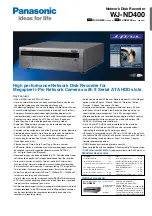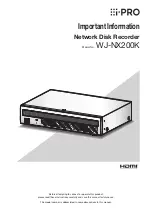
Software Operation and Overview
3-5 Command-Line Interface
MA25101A UG
PN: 10580-00476 Rev. B
3-9
3-5
Command-Line Interface
If your use case requires controlling the IQ stream through another software package, or if you want to script
the data transfer, the command-line interface is very convenient.
To run the command-line interface, open a console window to the application folder (typically C:\Program
Files\Anritsu Company\IQ Acquisition Tool). You can easily open a console window by browsing to the
application folder using Windows File Explorer, then entering ‘cmd’ in the address bar.
The command-line application is named ‘IQConsole.exe’. All options and settings are entered with this
application as command-line directives. Some directives can be entered together on a single command-line, and
some need to be entered singly. All commands begin with a hyphen (-). Many commands take an argument,
and a colon separates the directive from its argument.
As an example for format, consider the directive to set the ip address (analyzer hostname).
Iqconsole –h:192.168.0.22
The ‘-h’ tells the application that we are setting the hostname. The colon separates the directive from the value
passed in, and the hostname follows.
As another example, we can set the output filename:
Iqconsole –n:C:\datafiles\Data.bin
The ‘-n’ tells the application we are setting the output filename. The color separations the directive from the
filename, and the filename follows. Please note, the default value is ‘Data.bin’. The default value does not
contain a path specifier, so the file will be written to the current folder. If you are running from the application
folder, this is write protected and the transfer will fail. Specify a folder that you have write privileges to.
In the descriptions below, angle brackets (‘< >’) represent input values. Do not include the angle brackets, and
replace the text between the brackets with the desired value. A vertical bar (‘|’) should be read as ‘or’. Include
a single value from the list separated by vertical bars.
For convenience, certain common directives can be shortened to a single letter:
-s for stream
-a for abort
-d for display
-m for metadata
Use any combination of the following command-line directives to configure and control the spectrum analyzer.
These can be used together on a single line.
All of the above settings are remembered and do not need to be re-entered, except to change settings.
Note
Note: if you want to use the command-line interface to stop services that might interfere with data
transfer, you will need to open the console window in Administrator mode
-h:<Hostname>
=> IP address or hostname of the spectrum analyzer.
-f:<Frequency>
=> The center frequency in MHz.
-b:<BW>
=> The capture bandwidth in MHz.
-r:<RefLevel>
=> The reference level in dBm.
-a:<Attenuation>
=> The attenuation in dBm (Use 'Auto' to set auto-attenuation).
-d:<8|16|I32|F32>
=> The bit-depth.
-p:<on|off>
=> Turn preamp on or off.
-c:<count>
=> The number of 4 MB packets to transfer in I/Q stream.
-e:<yes|no>
=> Indicates if data capture should continue if an error in the data stream is detected.
-n:<filename>
=> Set the output filename (Default: 'Data.bin'.)
Summary of Contents for MA25101A
Page 33: ......














































